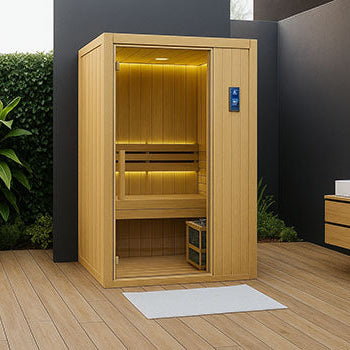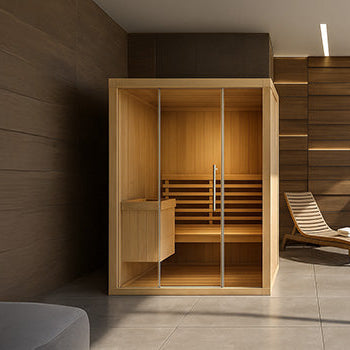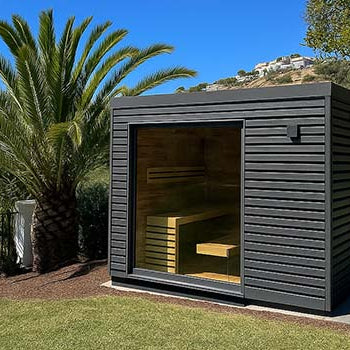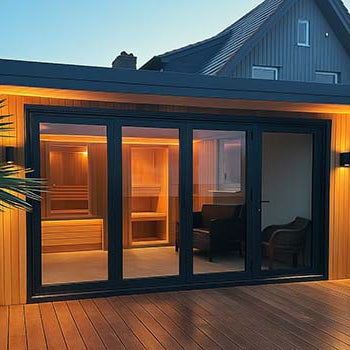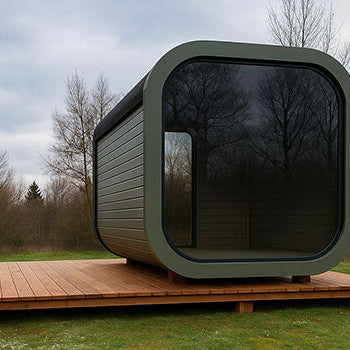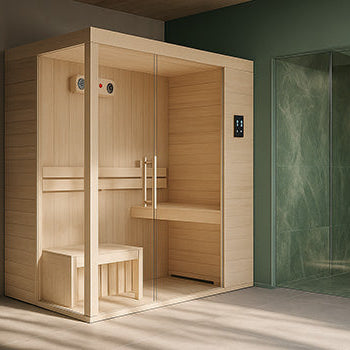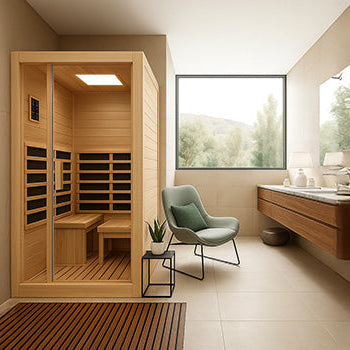Chasing that whoa-it's-hot sauna moment? Short answer: Finnish saunas top the charts—blasting up to 100°C of pure heat therapy. From steamy outdoor escapes to snug indoor sanctuaries, each one brings a different kind of burn.
Some are made for mellow warmth, others feel like stepping into the sun. Want to know why some feel like the sun, while others simmer gently? Let’s turn up the heat and explore.

Which Type of Sauna Reaches the Highest Temperatures?
Not all saunas are created equal, and when it comes to heat, the winner is clear. Traditional Finnish saunas crank the dial higher than any other type. But there’s more to this than just numbers.
Your body feels heat in different ways, depending on how it’s delivered. A dry blast, a humid fog, or a radiant wave, all have their vibe and benefits.
Understanding How Different Saunas Generate Heat
Picture this: You're in a wood cabin, a fire crackles in the corner, and waves of heat wrap around you. That’s your traditional sauna.
Now imagine basking in gentle warmth, like sunlight on a cool day—that’s infrared. Or maybe you're in a tiled room where clouds of hot steam billow in from every direction—that’s the steam room.
Each style uses a different method to raise your core temperature. And how does it make you feel? That varies, too.
Traditional Saunas: The Reigning Heat Champions
If you like it blazing hot, you're in traditional territory. These are the saunas your Scandinavian ancestors swore by, and they’ve stood the test of time for good reason.
Temperature Ranges for Electric and Wood-Fired Saunas (e.g., 70°C - 100°C+)
Traditional Finnish saunas usually run between 70°C and 100°C—though some daredevils push it even higher.
Electric heaters keep things controlled, but wood-fired models can soar when well-insulated. Step into one of these and you’ll feel the heat instantly cling to your skin.
Whether you’re in a sleek indoor sauna or a rustic traditional outdoor setup, the heat hits you fast and deep.
Why They Need High Air Temperatures
Unlike modern saunas that heat you directly, traditional models warm the air, which then warms you.
That means the whole room needs to be toasty to do the job. Dry air and high temperatures create that unmistakable, intense, detox-style sweat.
It’s simple, primal, and wildly effective.
Infrared Saunas: Lower Temperatures, Direct Heat

Infrared saunas are the quiet achievers of the sauna world. The room might not feel scorching, but don’t be fooled—your body is still working hard.
Typical Operating Temperatures for Infrared Saunas (e.g., 45°C - 65°C)
Most infrared saunas settle between 45°C and 65°C. That’s a far cry from the fiery Finnish setups, but it’s not about the room—it’s about you.
Infrared panels heat your body directly, not the air around you. So while the space feels mild, the sweat is real.
It’s a gentler, more gradual experience—perfect if you're easing into regular sauna sessions.
Why Lower Air Temperature Doesn't Mean Less Effective Heat
Here’s where it gets interesting: Lower air temps don’t equal lower impact.
Infrared heat goes deeper, warming you from the inside out. You may not feel suffocated, but your body’s working just as hard, if not harder.
It’s like choosing a slow burn over a sudden sizzle—just as effective, with less intensity.
Steam Rooms: High Humidity Heat
Ever sat in a fog so thick it feels like a hug? That’s a steam room.
They don’t chase high temperatures, but the humidity? Off the charts.
Temperature and Humidity Levels in Steam Rooms (e.g., 40°C - 50°C, 100% Humidity)
Steam rooms usually hang around 40°C to 50°C, but the humidity hits 100%. It’s not about dry heat—it’s about moisture wrapping you from head to toe.
Imagine walking into a warm, tropical cloud. You won’t see your feet, but you’ll feel the sweat instantly.
How Humidity Affects Perceived Heat Intensity
Humidity changes the game. It stops your body from cooling itself through evaporation, so you feel hotter, faster.
That’s why a 45°C steam room can feel as intense as an 80°C sauna. It’s muggy, it’s moist, and your pores will love you for it.
Factors Influencing Actual Sauna Temperature
Even the hottest sauna on paper can feel lukewarm without the right setup. It’s not just about the heater—it’s how the whole space holds heat.
Heater Power and Sauna Size/Insulation
A powerful heater in a tiny, well-insulated sauna? That’s the sweet spot.
Good insulation keeps the heat in, while poor design lets it leak like a drafty attic. Wood type matters too—cedar and pine are sauna staples for a reason.
Double walls, sealed joints, and solid materials help create that satisfying, stay-hot heat.
You’ll find this especially important when choosing a barrel sauna, as their compact design can optimise heating efficiency outdoors.
User Control and Settings
Many saunas let you control the heat, humidity, and even session timers. Your settings can make or break the experience.
A few degrees here, a bit more ventilation there—it's all in your hands. Whether you want a gentle glow or an all-out sweat fest, you set the tone.
Conclusion: Traditional Saunas Offer the Highest Air Temperatures

So, which sauna gets the hottest? The crown goes to traditional Finnish saunas—especially the wood-fired kind. These giants of heat easily hit 100°C and beyond, giving you that intense, dry, full-body roast.
But the hottest isn’t always the best—it depends on what you’re after. Want deep, gentle warmth? Go infrared. Crave steamy, spa-like vibes? Steam rooms deliver.
Your perfect sauna isn't just about heat—it's about how you like to feel when you sweat.
So whether you're setting up a log cabin retreat or carving out space with an indoor model, there’s a sauna out there with your name on it. Time to pick your fire and step inside.
